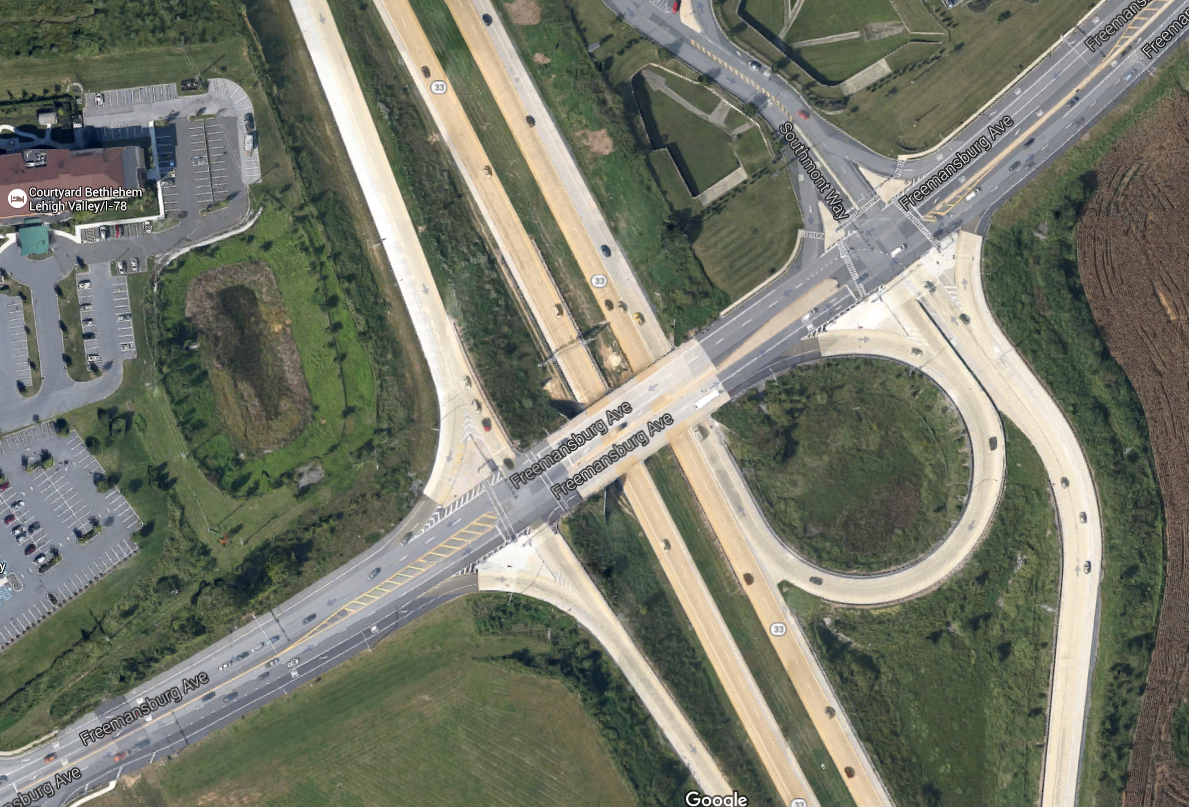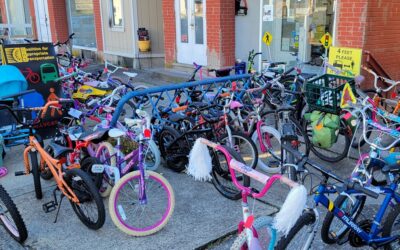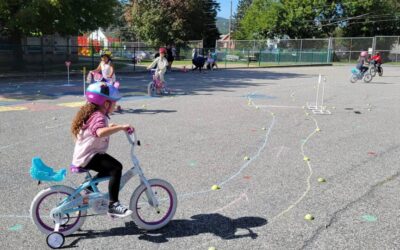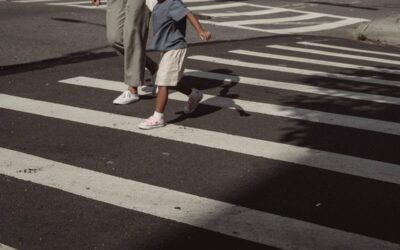Riddle #1: What is Like a River But is Not a River?
A highway is like a river.
More specifically, a limited-access highway. Traffic flows on the  highway, with on- and off-ramps controlling access. Limited access highways crisscross the Lehigh Valley (Routes 22, 33, 378, I-78, etc).
highway, with on- and off-ramps controlling access. Limited access highways crisscross the Lehigh Valley (Routes 22, 33, 378, I-78, etc).
In Pennsylvania (unlike other states such as California), bicyclists and pedestrians may not travel on designated highways controlled by on and off ramps (except with special permit), though they very often have needs for daily living to traverse them on secondary and arterial roads.
Riddle #2: What is Like a Bridge But is Not a Bridge?
Crossing over or under limited-access highways involve bridges (overpasses) or tunnels (underpasses), just like  crossing rivers. Over/underpasses are the only locations to cross these highways, and thereby are human-made bottlenecks that stitch together severed neighborhoods or access between adjacent communities.
crossing rivers. Over/underpasses are the only locations to cross these highways, and thereby are human-made bottlenecks that stitch together severed neighborhoods or access between adjacent communities.
When overpasses (and bridges) are widened from two to four to six and even eight lanes, speed generally increases. What used to be a low-key experience for a cyclist or pedestrian using a secondary roadway now requires more diligence and practice to safely navigate. Key to this is choosing the appropriate lane that serves their destination. While bicycling on the shoulder of the road is not generally a good idea, it is now no longer even an option for a cyclist crossing a limited access highway, since riding in the shoulder would require the cyclist to cut across the ramp lanes and perhaps also across turn only lanes.
The general principle to follow here is that the cyclist should be in the right portion of the lane that is traveling in the cyclist’s intended direction. Where a travel lane is not wide enough for a cyclist and a motor vehicle side by side, the cyclist is safest taking up the entire lane.
A Chasm Disconnecting
One example of this in our area is Freemansburg Avenue in Bethlehem Township, which has exploded with development in the Route 33 corridor. In the last 8 years, it has gone from two lanes to six lanes and is currently being widened again.
The video could be anywhere in our area, notably also the Tatamy Route 33 interchange in Palmer Township or the Hamilton Boulevard/222 I-78 interchange in Allentown/Lower Macungie.
The risk to connecting our communities with limited-access highways is that secondary roadways become disconnected or at a minimum, the human scale of existence is deterred to the point that even those designing them are leery to walk or bicycle along them.

Let’s hope that this sign will be no longer used in areas where people access homes, jobs or services on foot – by choice or necessity.
A Bridge of Planning Mentality
There may be hope for cyclists and pedestrians in the Lehigh Valley, because many municipal planners are realizing that the human scale is more inviting, safe and enjoyable – that there is merit in creating housing, jobs and shopping in close proximity with sidewalks and traffic calming measures to maintain motorist travel speeds 35 mph or below.
Planners are realizing that arterial highways are a health hazard in downtown areas where high numbers of pedestrians and cyclists are concentrated.
PennDOT is committed to providing bicycle/pedestrian access through it’s Statewide Bike/Ped Coordinator, Roy Gothie, as well as through district coordinators, who specialize in bicycle & pedestrian access for highway projects and trail crossings. It is this team that should raise the flag when high-speed arterial roadway projects permeate downtowns.
Where Does CAT Come in?
From path to small street to big street, CAT is here to educate about pedestrian access and cycling smart.
Maintaining enjoyable pedestrian access is a moral responsibility to all involved.
Regarding bicycling on widened roads that often serve as bridges across limited-access highways? If you are intimidated by them, you are not alone. They may be more challenging to ride than urban areas, because of vastness of space and vehicle speeds – yet, safe travel on them is possible.
This makes it all the more important, when riding on multi-lane roadways to (1) be visible, (2) ride confidently in the lane that will take you where you need to go, (3) obey traffic signals, (4) scan before changing lanes or moving from the shoulder to the lane and (5) communicate movements with hand signals.
This takes focus, practice and a few rides to get the legs strong, but you can do it!
To motorists, including car drivers, truck drivers and bus drivers, it is your responsibility to (1) expect legally operating cyclists (at any time) and pedestrians (walking legally along the road and crossing at intersections), (2) to drive at a prudent speed to control your vehicle and (3) to give space when passing (4 feet in PA).
CAT will offer Bicycle Traffic Skills 101 (TS101) class on Saturday, June 25, 2016 (8am-4pm) for ages 14 to adult (highly recommended for all cyclists). Call 610-954-5744, or email scott@lvcat.org to register.
Later this year, CAT will offer the ABEA Cycling Savvy experience, a different kind of traffic skills class that compliments the TS101 curriculum.







0 Comments